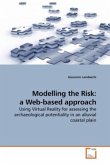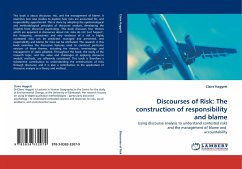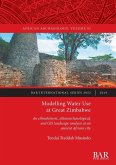
Broschiertes Buch
Using Virtual Reality for assessing the archaeological potentiality in an alluvial coastal plain
2009
VDM Verlag Dr. Müller

0,00 €
Sofort per Download lieferbar
eBook, ePUB
6. Februar 2022
Taylor & Francis eBooks
| Gebundenes Buch | 195,99 € | |
| eBook, PDF |
0,00 €
Sofort per Download lieferbar
Ähnliche Artikel

Broschiertes Buch
A New Zealand Police Case Study
2009
VDM Verlag Dr. Müller

Broschiertes Buch
A simulation study of tillage-induced pattern formation
31. Dezember 1997
British Archaeological Reports Oxford Ltd

Gebundenes Buch
Slave from the Machine
1st edition 2021
23. Juli 2021
Springer / Springer International Publishing / Springer, Berlin
978-3-030-75133-3

Broschiertes Buch
Using discourse analysis to understand contested risks and the management of blame and accountability
15. September 2010
LAP Lambert Academic Publishing

Gebundenes Buch
Concepts, Methods, and Applications
1st ed. 2017
22. August 2016
Springer / Springer International Publishing / Springer, Berlin
978-3-319-32281-0

Broschiertes Buch
In Uganda
Aufl.
9. Dezember 2011
LAP Lambert Academic Publishing

Broschiertes Buch
Slave from the Machine
1st edition 2021
24. Juli 2022
Springer / Springer International Publishing / Springer, Berlin
978-3-030-75136-4

Gebundenes Buch
Theorizing at the Edge of Chaos
1st ed. 2017
13. Dezember 2017
Palgrave Macmillan / Springer International Publishing / Springer, Berlin
978-3-319-57770-8

Broschiertes Buch
Between Texts and Maps
1st ed. 2015
12. Dezember 2017
Macmillan Education / Palgrave Macmillan UK / Springer Palgrave Macmillan
978-1-349-56623-5

Broschiertes Buch
An ethnohistoric, ethnoarchaeological, and GIS landscape analysis at an ancient African city
30. September 2019
British Archaeological Reports (Oxford) Ltd
Ähnlichkeitssuche: Fact®Finder von OMIKRON
